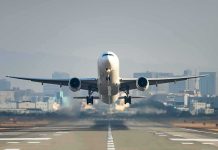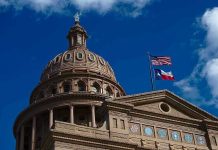
America’s skies faced a new kind of threat as a United Airlines pilot was injured at 36,000 feet when a mysterious object shattered the cockpit windshield, raising urgent questions about aviation safety and government accountability.
Story Snapshot
- A United Airlines flight was forced to divert after an unidentified object struck the windshield at cruising altitude, injuring the pilot.
- The incident is unprecedented, with experts considering space debris or meteorite as possible causes.
- Authorities have yet to confirm the cause, prompting concern over high-altitude hazards and regulatory preparedness.
- Passengers experienced significant delays; investigation may impact future aviation and space safety protocols.
Unprecedented High-Altitude Impact Raises Safety Alarms
On October 16, 2025, United Airlines flight UA1093, a Boeing 737 MAX 8, was cruising from Denver to Los Angeles when disaster struck at 36,000 feet. An unidentified object impacted the first officer’s windshield, sending glass fragments into the cockpit and injuring the pilot. The crew initiated an emergency descent and diverted to Salt Lake City, landing safely about 50 minutes later. This event is particularly alarming because such impacts typically occur at lower altitudes, often involving bird strikes or foreign object debris. The possibility that space debris or a meteorite caused the damage introduces a new, high-stakes risk for both airlines and passengers.
Investigators Probe Causes Amid Uncertainty
In the aftermath, regulatory authorities—including the FAA and NTSB—launched a comprehensive investigation. Photos circulating on social media revealed the extent of the damage: the co-pilot’s windshield was shattered, bearing scorch marks, and the pilot’s arm was bloodied. Officials have not confirmed the exact cause but are exploring multiple theories, such as space debris, meteorite, electrical malfunction, or even rare meteorological phenomena. Given the incident’s altitude, experts find bird strikes or hail unlikely, heightening concern about the growing risks posed by space junk due to increased satellite launches. As the investigation continues, the lack of definitive answers has fueled anxiety among travelers and the aviation industry.
Stakeholders Respond and Passengers Left Stranded
United Airlines has assured the public of its commitment to safety, promptly replacing the damaged aircraft and transferring the 140 affected passengers to another plane. The six-hour delay underscores the disruption caused by such unexpected hazards. Meanwhile, industry stakeholders—including regulatory bodies, aerospace safety experts, and meteorological analysts—are closely monitoring the investigation’s findings. The incident has prompted calls for reviewing safety protocols related to high-altitude impacts and reassessing risk models, especially as commercial flights increasingly share airspace with orbital debris from satellite activity.
Broader Implications for Aviation and Space Policy
Should the investigation confirm space debris as the cause, the event could trigger significant regulatory changes and international cooperation to address orbital hazards. Short-term consequences include pilot injury, costly aircraft repairs, and heightened passenger anxiety. Long-term, the aviation sector may face new mandates for windshield resilience and improved tracking of space debris. The space industry, too, might see increased pressure to manage orbital clutter more effectively. As the Trump administration has emphasized national sovereignty and infrastructure protection, this incident will likely fuel demands for decisive government action to safeguard American skies against emerging threats.
United Airlines Pilot Injured After Mystery Object Smashes Windshield at 36,000 Feet https://t.co/zrLz1eBXcX
— ⚠️Today at the Ministry of Truth ♨️🔥⚡🔎🎯 (@jackcuerton) October 20, 2025
Expert Perspectives and Ongoing Investigation
Aviation safety experts characterize the incident as unprecedented, given the altitude and possible involvement of space debris or a meteorite. Some analysts point to electrical arcing due to observed scorch marks, but the lack of consensus has left regulators, airlines, and the public waiting for answers. The broader lesson remains clear: as technological advances and increased satellite launches crowd Earth’s orbit, new threats are emerging that challenge existing regulatory frameworks. The Trump administration, having prioritized American safety and infrastructure, faces mounting pressure to respond with robust policies that address these evolving hazards without succumbing to bureaucratic delay or globalist inaction.
Sources:
United Boeing 737 Damaged by Possible Space Debris
United Pilot Injured After Debris Smashes Windshield



